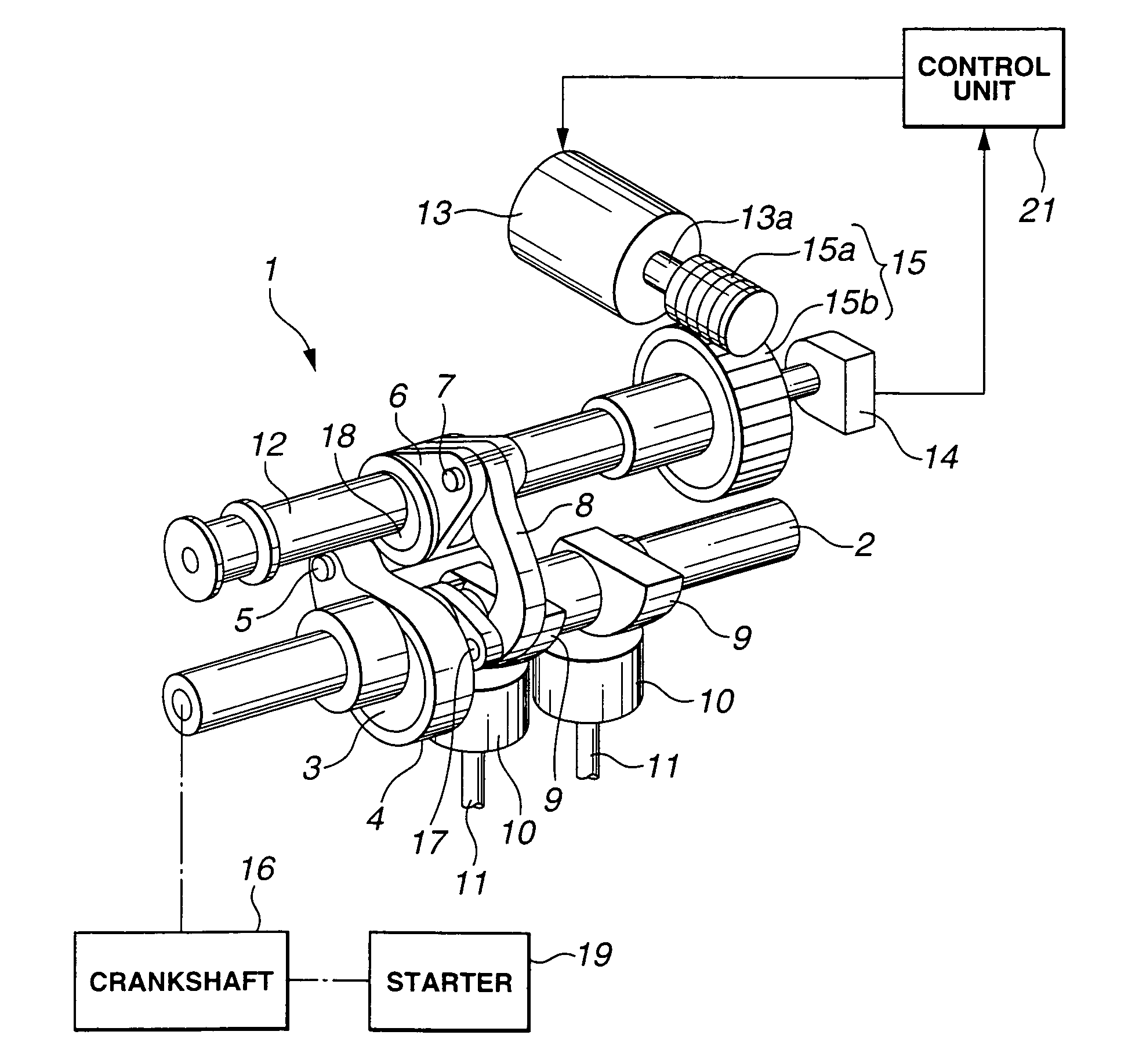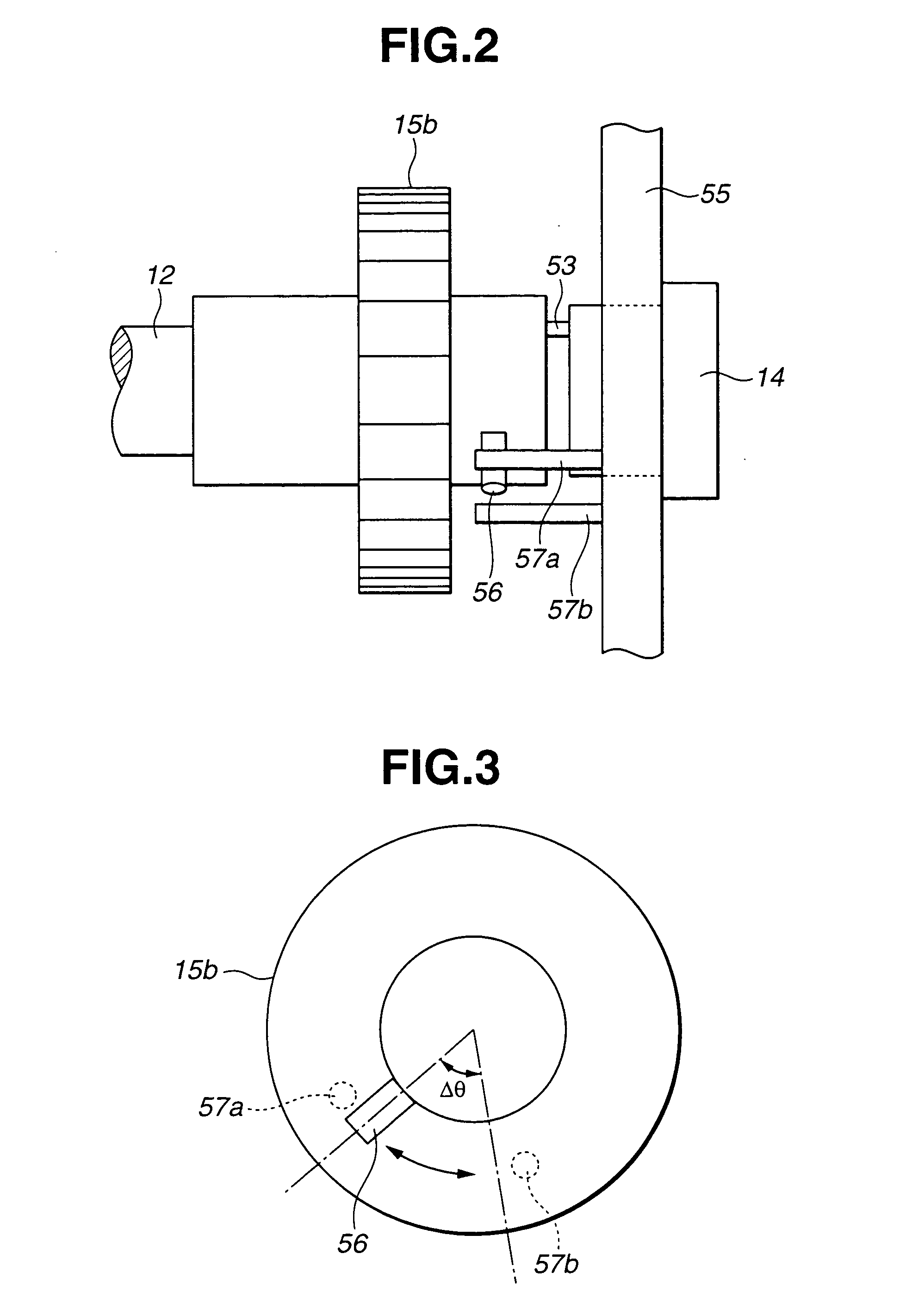Learning apparatus and method for variable valve control of internal combustion engine
a technology of variable valve and learning apparatus, which is applied in the direction of non-mechanical valves, engine starters, instruments, etc., can solve the problems of accelerating biting, roughening and wear of sliding parts, and the possibility of making the engine stability considerably worse, so as to reduce the responsiveness, the learning time is longer, and the friction resistance is reduced
- Summary
- Abstract
- Description
- Claims
- Application Information
AI Technical Summary
Benefits of technology
Problems solved by technology
Method used
Image
Examples
first embodiment
[0022] Referring first to FIG. 1, a learning apparatus for a variable valve control of an internal combustion engine according to the present invention includes variable valve operating mechanism 1 which is shown as constituting a variable valve event and lift mechanism (VEL) that is mechanically connected to crank shaft 16 of the internal combustion engine so as to drive intake valves 11 to open and close in timed relation with rotation of crankshaft 16 while being capable of continuously varying lift characteristics of intake valves 11 in dependence upon rotation of control shaft 12, more specifically both of valve lift and operation angle of intake valve 11. Since an example of variable valve operating mechanism 1 is disclosed in Unexamined Japanese Patent Publication No. 2003-41955, brief description will be made thereto.
[0023] Variable valve operating mechanism 1 includes drive shaft 2 rotatably supported on a cam bracket (not shown) that is disposed at an upper part of a cylin...
sixth embodiment
[0048] In the present invention, a control routine shown in FIG. 14 is executed immediately before stoppage of the engine, in addition to the control routine at start of the engine, that is shown in FIG. 12. The control immediately before stoppage of the engine (FIG. 14) is combined with the control at start of the engine (FIG. 12).
[0049] Referring to FIG. 14, similarly to the first embodiment, in step S31, the routine is started when the ignition switch is switched from ON to OFF, i.e., when a driver's requirement for stoppage of the engine is detected. In the subsequent step S32, supply of fuel is stopped. In step S33, control shaft 12 is rotationally driven toward the minimum operation angle position that is the reference position. Then, the control proceeds to step S34 where it is determined whether or not crankshaft 16 has stopped rotating. If it is determined that crankshaft 16 is not rotating but at standstill, the control proceeds to step S35 where the control of driving con...
PUM
 Login to View More
Login to View More Abstract
Description
Claims
Application Information
 Login to View More
Login to View More - R&D
- Intellectual Property
- Life Sciences
- Materials
- Tech Scout
- Unparalleled Data Quality
- Higher Quality Content
- 60% Fewer Hallucinations
Browse by: Latest US Patents, China's latest patents, Technical Efficacy Thesaurus, Application Domain, Technology Topic, Popular Technical Reports.
© 2025 PatSnap. All rights reserved.Legal|Privacy policy|Modern Slavery Act Transparency Statement|Sitemap|About US| Contact US: help@patsnap.com



